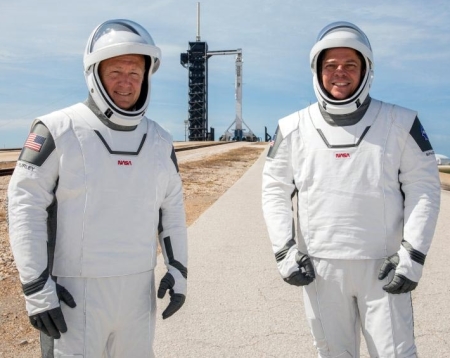Dragon update for the ongoing and next mission
Two stories today provide an update of the overall schedule and status of SpaceX’s manned Dragon capsule, both now and into the future.
First, they are preparing for the return of Bob Behnken and Doug Hurley from ISS on August 2nd. Prior to return they will use the station’s robot arm to inspect the capsule’s heat shield to make sure it did not sustain any damage during its two months in space. Such inspections will be standard procedure on future flights, something NASA did not do on shuttle flights until after the Columbia failure.
It is unlikely there is any damage, but making this inspection is plain common sense. If the heat shield has been damaged, the astronauts can stay on board ISS until the next Dragon arrives, which can then bring them home.
Second, NASA and SpaceX have worked out a tentative schedule for that next Dragon manned launch, now set for sometime in late September. The agency wants a bit of time to review the full results of the first demo mission before flying a second.
Based on all that has happened so far, it now appears unlikely that the agency will find anything that prevents that late September flight.
Two stories today provide an update of the overall schedule and status of SpaceX’s manned Dragon capsule, both now and into the future.
First, they are preparing for the return of Bob Behnken and Doug Hurley from ISS on August 2nd. Prior to return they will use the station’s robot arm to inspect the capsule’s heat shield to make sure it did not sustain any damage during its two months in space. Such inspections will be standard procedure on future flights, something NASA did not do on shuttle flights until after the Columbia failure.
It is unlikely there is any damage, but making this inspection is plain common sense. If the heat shield has been damaged, the astronauts can stay on board ISS until the next Dragon arrives, which can then bring them home.
Second, NASA and SpaceX have worked out a tentative schedule for that next Dragon manned launch, now set for sometime in late September. The agency wants a bit of time to review the full results of the first demo mission before flying a second.
Based on all that has happened so far, it now appears unlikely that the agency will find anything that prevents that late September flight.

